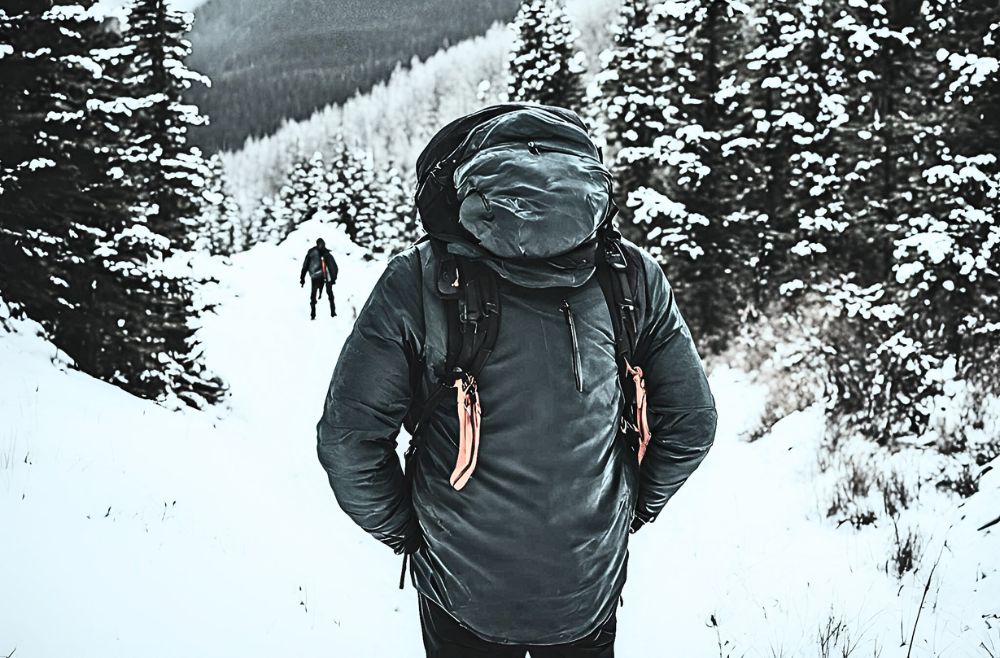Have you ever wondered if there are secrets to staying warm while winter backpacking?
As someone who has braved the frozen trails and conquered the icy peaks, I can tell you that there are indeed tips and techniques that can help you beat the chill and enjoy your winter adventures to the fullest.
From mastering the art of layering to understanding the importance of insulation and heat retention, I will guide you through the essential strategies that will keep you warm in the harshest of winter conditions.
So, prepare to uncover the secrets that will make your winter backpacking trips not only survivable but truly enjoyable.
Key Takeaways
- Staying hydrated is crucial for staying warm in cold temperatures and preventing dehydration-induced coldness.
- Choosing the right gear, such as insulated hiking boots and layered clothing, helps retain body heat and keep extremities warm.
- Proper insulation of the core, through wearing synthetic insulated vests or using shoulder shocks, contributes to overall warmth.
- Enhancing the sleep system with closed-cell foam sleeping pads and sleeping bag liners can improve insulation and increase comfort during cold nights.
In This Article
Importance of Hydration and Caloric Intake
Staying properly hydrated and fueling your body with enough calories is crucial for staying warm and comfortable during winter backpacking adventures.
In cold weather, preventing dehydration is essential. Cold temperatures can trick us into thinking we don’t need as much water, but our bodies still require hydration. Using reservoirs instead of water bottles is more convenient, and insulating reservoir sleeves can prevent freezing. Blowing air back into the reservoir tube can also help prevent freezing.
When it comes to food, choosing high calorie backpacking meals is key. Eating enough generates internal heat, and calories provide the energy needed to keep our bodies warm. So, make sure to pack meals that are high in calories to keep your energy levels up and your body warm during those chilly winter hikes.
Keeping Hands and Toes Warm
After ensuring proper hydration and fueling my body with enough calories, the next step in staying warm during winter backpacking is to focus on keeping my hands and toes toasty.
Choosing the right mittens or gloves is crucial for preventing frostbite in my fingers and toes. I opt for mittens over gloves because they’re more effective in keeping my fingers warm. I make sure to keep my mittens on and off the ground to retain warmth. Performing tasks slowly with mittens on improves my dexterity.
For my toes, I use neoprene toe sleeves for insulation and sometimes add toe warmers for extra warmth.
It’s also important to keep my core warm, as it helps to keep my extremities warm. I wear a synthetic insulated vest to provide additional warmth and insulation.
Proper Gear for Winter Backpacking
To ensure a warm and comfortable winter backpacking experience, it’s essential to have the proper gear in place.
One of the most important gear considerations is insulated hiking boots. These boots are designed to keep your feet warm by providing insulation and protection from the cold.
Additionally, layering clothing is crucial in maintaining body heat. By wearing multiple layers, you can trap heat between each layer, creating a barrier against the cold. Start with a moisture-wicking base layer, add an insulating mid-layer, and top it off with a waterproof and windproof outer layer. This combination will keep you warm and protected from the elements.
Additional Tips for Staying Warm
If you want to stay warm during your winter backpacking adventure, here are some additional tips to help you keep cozy and comfortable in the cold.
Layering techniques are essential for trapping heat and preventing moisture buildup. Start with a moisture-wicking base layer to keep sweat away from your skin. Add an insulating mid-layer, like a fleece or down jacket, to provide warmth. Finally, top it off with a waterproof and breathable outer layer to protect against wind and snow. Remember to adjust your layers as you start to sweat to prevent moisture buildup.
Another tip is to keep your sleeping bag and sleeping pad insulated from the ground. Use a closed-cell foam pad for added insulation or stack the R-values by combining it with an air pad.
Enhancing Sleep System for Warmth
Enhancing your sleep system for warmth is crucial when winter backpacking to ensure a comfortable and restful night’s sleep in cold temperatures. One way to improve insulation is by combining different sleeping pads. By using a closed-cell foam pad along with an air pad, you can stack the R-values and increase the overall insulation value. This combination provides better insulation and helps prevent heat loss to the cold ground. Another option to consider is using a sleeping bag liner. While it may not add specific degrees of warmth, it does provide an additional layer of insulation between your body and the cold nylon of the sleeping bag. Sleeping bag liners also improve comfort and help keep your sleeping bag clean. By enhancing your sleep system with these strategies, you can stay warm and cozy throughout the night, ensuring a refreshing start to your winter backpacking adventures.
| Enhancing Sleep System for Warmth |
|---|
| Combining different sleeping pads for better insulation |
| Benefits of using a sleeping bag liner |
Staying Warm for Comfort and Safety
Staying warm in cold weather isn’t only essential for comfort but also crucial for ensuring your safety in the outdoors. When winter backpacking, it’s important to take extra precautions to stay warm in extreme conditions.
Layering your clothing is key to retaining body heat, and insulated hiking boots, heavy wool socks, and neoprene toe covers will help keep your feet warm. Keeping your core insulated with a synthetic insulated vest will also help to keep your extremities warm. Additionally, staying hydrated and eating enough calories will generate internal heat and keep you warm.
Avoid sweating by adjusting your layers and use hand warmers or heated packs for added warmth. Remember to keep your sleeping bag and sleeping pad insulated from the ground, wear a hat and neck gaiter, and stay dry to prevent body heat loss through evaporation.
Final Thoughts
In conclusion, mastering winter backpacking and staying warm in the winter wilderness isn’t only possible, but also incredibly rewarding. By staying hydrated and nourished, protecting your extremities, and investing in the right gear, you can conquer the challenges of the cold season.
Additionally, enhancing your sleep system and prioritizing comfort and safety will ensure a memorable and enjoyable winter backpacking experience.
So, embrace the winter wonderland and unlock the secrets to staying warm on your next adventure.



We are participants in the Amazon Services LLC Associates Program, an affiliate advertising program designed to provide a means for sites to earn advertising fees by advertising and linking to Amazon.com